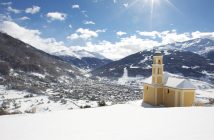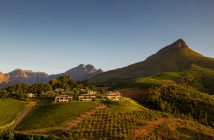At the Sanctuary of Bom Jesus, in Braga, Portugal, there’s a granite statue of a soldier atop a horse, representing Sao Longuinhos (saint of the same name). Legend/superstition dictates that single women circle the statue three times to find a husband within the year. Me, myself and I contemplate walking round *just in case* but figure the Big Man might not be so happy with my superstition. Just hours later though and a farm manager has asked for my hand in marriage.
I should explain…
After the beautiful gardens, baroque stone stairways, fountains and statues (not to mention tourists, church attendees and joggers) of Bom Jesus I make my way from the spiritual sanctuary to the Santa Maria da Feira, Porto’s annual Medieval festival. Including a procession, battle re-enactments, petting farms for children and enough roast pig and Sangria to feed the whole of Medieval Portugal, the festival has grown in popularity and size since it first began in 1996. With it since the beginning, João Aires is passionate about the event and proudly takes me round the site, stopping off to greet people along the way or drink a flagon of beer, all the while dressed in a cape and poulaines (medieval pointy shoes) as if it’s the most normal thing to do on a baking hot Saturday afternoon just outside of Porto.

By the evening the site is heaving with Portuguese families picnicking on the grass, the smell of wood smoke wafts through the air and younger crowds down shots of dragon blood, a thick and sweet liqueur akin to Benylin cough-syrup. Away from the noise and crowds of the main site, I step into Santa Maria da Feira very own spa: a tranquil garden with waterside white tents offering shade and cushions to sit on. A harpist plucks away and I am led up a stone staircase to a massage tent.
It’s at the medieval fair the aforementioned farm manager proposes, promising me a comfortable life. I tell him thanks v much but I don’t have any cows for my dowry. He’s still keen but after an afternoon of 12th century re-enactment I’m ready to get back to the main attraction of my trip : 21st century Porto.
Portugal’s second city is perfect for a weekend break: aside from being closeby to Braga and its nearby attractions (FYI it’s worth getting a train to Braga just so you can admire the ceramic tiled ticket hall at Ribeira station), Porto’s most obvious attraction for tourists is its Port Lodges. Tours and tastings start from just a few euros. At Graham’s lodge I try a delicious marmalade-flavoured tawny port and learn that vintage port needs to be drunk within three days of opening the bottle. Just as well I can’t afford vintage Port. For tastings closer to the city, stroll across the Dom Luis bridge and walk along the Ribeira waterfront. Porto Cruz has an interactive museum, restaurant serving up tasty tapas (I recommend the courgette fritters in particular) and a sublime roof terrace with fantastic views of the river Douro. It’s only from the river that you can fully take in the higgledy pastel painted buildings of Porto – plus fully admire the Dona Maria Pia Bridge, also an iron railway bridge, which is now out of service and was designed by Gustave Eiffel pre-Eiffel tower.

Aside from port, you can’t come to Porto – or anywhere in Portugal for that matter without indulging in the nation’s sweet dish, Pasteis de Natas, or custard tarts. I enjoy fresh tarts with tea for breakfast at the cafe next to bookshop Lello, considered to be one of the most beautiful bookshops in the world. It’s not even 10am and a queue of 40-plus people has already formed to visit the bookstore. It used to be free to enter but now it costs 3 euros, mainly to control numbers as so many people were coming to take pictures but not buy books. The neo gothic building was built in 1906 and includes a stained glass ceiling, curved bookcases, intricate wood work and painted plaster that looks like wood. It’s stunning and as a book shop boff I could have stayed in there for hours but for the stream of visitors wanting to buy Harry Potter books – Porto is where JK Rowling lived when she first started writing the HP stories. For something you might not pick up in your local bookstore, see the English translations of Portuguese novelist Jose Saramago who’s also written books on the country’s history.
The Cafe Majestic, on the long shopping street Rude da Santa Catarina, is another site where J K Rowling sat down to pen her stories. Just don’t go for an early breakfast: doors open at half 9. Abandoning plans to start my own novel over some Majestic natas I head to the busy Bolhao market for some fresh figs instead.
Walking around the old and narrow streets of the centre I pass old grocery shops stocking traditional spicy Portuguese sausage Linguica and fish pastes in pretty tin packaging. Cobbled streets are lined with bunting, leftover from the St John’s festival, where half a million people pack the roads to watch fireworks, drink 1 euro beers and eat grilled sardines. The Ribeira old quarters is also the best place to head for nighttime drinks, with people crowding the pavements into the early hours. The Gaia riverbank meanwhile is where I discover porto tonico – white port and tonic, a worthy rival of the G&T, and the Francesinha, a Portuguese toasted cheese sandwich, covered in sauce and stuffed with meat, including Linguica: heavy but fantastic.

For a more refined dining experience visit the sought-after restaurant DOP. It’s in the Palace of Arts, a beautiful 14th century building with large windows overlooking the street. Chef Rui Paula is one of the most renowned in the country and his menu serves up traditional, rustic Portuguese dishes – but delicately and beautifully presented.
Away from the city centre and port lodges make time to head to the beach at Foz. The Atlantic may be chilly to swim in but on our visit the sun is warm and the various beach clubs make the perfect spots for sundowners (porto tonico of course) while listening to the waves and gulls beat out an hypnotic rhythm. From the seaside Matosinhos, an area just outside of Porto, is the place to go for seafood. In the evening the streets are filled with delicious cooking smells of grilled fish. At traditional restaurant Os Lusiadas our whole baked sea bass arrives on a trolley, covered in sea salt and set alight, the flames char the rosemary garnish, to create a smoky perfume.
Flaking paintwork, graffiti, old church buildings and ceramic patterned tiles are the design hallmark’s of Portugal’s second city but for something visually different, visit the Casa da Musica. Designed by Dutch architect Rem Koolhaas, its 48 square feet aluminium interior hosts more than 3000 revellers at club nights but there are also playful spaces for children and young families to explore during the daytime. The main auditorium meanwhile is unusual for the amount of natural light it lets in, overlooking it is a floating bar, which lights up at night.
In just 48 hours I’ve learnt you can pack a lot into a trip to Porto and the surrounding area: and if I am still single next year there’s a long haired, black-toothed medieval farmer who’ll marry me.
TAP Portugal flies directly from London Gatwick to Porto 14 times a week, return fares starting at £120 including all taxes and surcharges. For further information and to book, visit www.flytap.com or call 0345 601 0932.
For more information on Porto visit visitportoandnorth.travel.




